Review for Once Upon A Time In The West
Introduction
Seeing as I’ve just finished re-watching the Dollars trilogy, it only makes sense to turn to Sergio Leone’s next Spaghetti Western for review, Once Upon a Time in the West. The funny thing is that I’ve never seen it before, despite buying my dad the DVD release 10 years ago, and then this Blu-ray disc when he upgraded to HD. It’s the trouble with these epic length movies that approach three hours or more in length, I always put them off until I have enough time to watch them at leisure, but that time never seems to come. You would have thought that I would make the time to watch the film described by many as the best Western ever made, but after twenty years of hype, I’ve probably left it too late.
The odd thing is that this wasn’t the film that Leone wanted to make at all after The Good, The Bad, and The Ugly, as he was done with Westerns at the time. It’s just that he was hot property in Hollywood by then, and Hollywood wanted him to make Westerns. He got the Hollywood budget to do so, and to sweeten the deal, he also got Henry Fonda as a star, an actor he’d always wanted since the original Fistful of Dollars. What Leone wanted to make was a mob movie; as inspired by the setting of the civil war in The Good, The Bad, and The Ugly, he wanted to set his movies around events and movements that shaped America. This Western became the first of his next trilogy following ‘The Man With No Name’. Once Upon a Time in the West was set during the coming of the railroad, Duck, You Sucker! or A Fistful of Dynamite’s alternate title of Once Upon a Time... The Revolution is self explanatory, and Leone finally got to make his mob epic in Once Upon a Time in America. The latter is another film that I’ve yet to watch, but first the Western...
Jill McBain arrives in the West from New Orleans to join her new family, start her new life with husband Brett and his three children. Only she arrives in time for their funerals. They’ve been murdered, and all evidence points to the outlaw Cheyenne and his gang. Cheyenne may be many things, but he’s no child-killer, and even his reputation is worth something. He’s motivated to find the true killer, although that’s complicated by the arrival of the Harmonica playing stranger, who wants to see the probable killer for reasons of his own. And it’s easy to figure out who the real killer is, as the railroad is coming through town, and the McBain land is ideally situated. McBain knew it before he died, Morton of the railroad company knows it, and his right hand man Frank certainly knows it. While Morton may be the businessman, he’s hired Frank for his gun, and now that Jill McBain is the sole owner of that property, she’s become Frank’s next target.
Picture
I didn’t have the best time when it came to the Man With No Name trilogy, as MGM/Fox’s treatment of the films was adequate at best, with only For A Few Dollars More really living up to the HD description. Paramount’s treatment of Once Upon a Time in the West is a whole lot more satisfying, even though the film was shot in the same, technically awkward, Techniscope format. However it’s a format that really shows off Leone’s love of the extreme close-up, and the grand arid vistas best, and it’s no surprise that he kept it for this elegiac Western. Once Upon a Time in the West gets a 2.35:1 widescreen transfer at 1080p, and the image is clear, sharp, with strong consistent colours, and rich with detail. It’s not particularly affected by signs of age and print damage, there’s a natural layer of film grain, and the slight imperceptible wobble of a film source. One or two mid-range shots do appear a little excessively soft, but this is a gorgeous treatment of a classic western. If only the Clint Eastwood movies looked this good.
Sound
If only the Dollars trilogy sounded this good as well. MGM/Fox’s treatment of those resulted in overcooked surround tracks, and for the final film, a disappointing down-mix mono as well. Once Upon a Time in the West also gets a DTS-HD MA 5.1 Surround upgrade in English, but this is how such remixes should be done, sympathetically, and with a light touch. The film’s audio still feels predominantly front-focussed, but the surrounds are used to open out the soundstage, offer a little immersive ambience, and give the effects a little more room. It’s a rich and full-bodied audio track, very well balanced and only enhancing the film. I did try the included Restored English DD 2.0 mono track, and while purists will opt for this, as I chose to do with the Dollars movies, I wasn’t as impressed with Once Upon a Time in the West’s mono track, as I felt that the dialogue was lost against the rest of the audio. You also get DD 2.0 mono tracks in French, Spanish and German, with these and several other subtitle tracks. And Ennio Morricone crafts another impeccable movie soundtrack.
Extras
You just get a plain disc in a simple Amaray case, nothing fancy on the sleeve. It’s a far cry from the Special Edition DVD that came in a 2-disc digipack, full of artwork, and a booklet of production notes. The disc presents its content with a static menu, although it does take a rather long time to load for such a simple interface. Part of that might be the progress bar that pops up when the film is paused, or when you skip through.
The disc does simply port over the DVD content when it comes to the extra features.
The audio commentary comes with a long list of contributors, directors John Carpenter, John Milius, Alex Cox, film historians Sir Christopher Frayling, and Dr Sheldon Hall, and Cast & Crew, although it appears that amounts to Claudia Cardinale and Bernardo Bertolucci. I was expecting something of a patchwork, edited together commentary, and it does eventually become that, but not after a long period of Christopher Frayling really setting the scene, discussing the film in some depth before the commentary switches to another speaker.
There are three featurettes on the disc, An Opera of Violence (28:51), The Wages of Sin (19:36), Something to do With Death (18:17), which feature interviews recorded for the disc, and vintage interviews with the cast and crew, as well as interviews with the speakers that contributed to the commentary, on the making of the film.
Railroad Revolutionising the West lasts 6:21 and is a visual essay on the growth of the railways in the US, and how they helped unify the country.
Locations Then and Now is a 4:28 slideshow doing a compare and contrast on the locations where the film was shot. There is also a 5:16 Production Gallery Slideshow. All of these featurettes and galleries are in 480i SD.
The Theatrical Trailer on the other hand is in 1080p, and lasts 2:52.
Conclusion
I did it again. I left it too late to watch a film, and in the interim swallowed the hype and copious critical praise around it to raise my expectations to an unrealistic height. Once Upon a Time in the West isn’t the best Western ever made. It is an excellent movie though, and I doubt that one single watch is enough for me to fully appreciate it at this point. In terms of direction, in terms of scale, and in terms of visual poetry, this is probably the best of Leone’s Westerns, but personally I do prefer the Man With No Name trilogy. And part of my slight disappointment with Once Upon a Time in the West is that it is in no way a Western in the same tone and style of those three films.
Those three films were character based stories; there were arcs to them, villains to quail from, heroes, or anti-heroes to root for, great humour, action, thrills and excitement, and a sense of triumphalism to them. Once Upon a Time in the West does have that, but that is really just surface detail. This film serves more as a deconstruction of the Western genre, a tearing down of those gunfighter myths, the closing of a chapter in American history. As such, the characters in the film seem less like well-defined characters, but more like archetypes. Jill McBain is the whore with the heart of gold, Frank is the cold-blooded killer with the kindly smile, and Harmonica is the least defined of them all, a man with vengeance in mind, but who exists more as a force of nature than a man, single minded to the point of obsession, but obscure about his motives to a supernatural degree. He rapidly comes to haunt Frank, taunts his prey with that eerie Harmonica tune. It’s telling that Clint Eastwood would come to play a similar character in High Plains Drifter. Although it must be said that Charles Bronson had the perfect face for Spaghetti Westerns.
Then there is Cheyenne, who serves as a Greek chorus, the one character who’s voluble, gregarious, and outgoing, apt to talk while the others remain tight-lipped. He’s practically the only personality in the film that I could engage with. As you can see in the extra features, this film is more about death, about endings. It is the end of an era in the West with the coming of the railroad, and it’s also about the death of a way of life, and indeed the individual characters in this film. The Dollars movies might have had a higher death count, but there was that sense of triumphalism to the characters, the sense that they were striving, ambitious, trying to win. Once Upon a Time in the West doesn’t have that, it’s a meditation on death, with Leone’s typical directorial style now lingering over the inevitable demise of the film’s characters. Even Frank, who’s motivated by greed of a sort, lacks the business acumen of his employer, very much isn’t a man for the forthcoming age, and can only express his ambition with a gun. It makes Cheyenne’s fate in the film all the more disappointing, as the conclusion to his arc begins off screen, a sign that personality and flamboyance is meaningless against the vagaries of fate. It’s apt for the tone of the film, but I find it unsatisfying to watch.
I did like the end of the film though, the end of one era and the beginning of the next, the railroad coming, and Jill McBain metaphorically assuming the mantle of mother to a nation. I’m very much going to have to watch this film again, this time knowing what to expect, and not prejudiced by wanting it to be something that it patently isn’t. Once Upon a Time in the West is an elegiac movie, a small scale story populated by archetypes turning it into a myth, set against the epic backdrop of the building of a nation. With Leone’s operatic direction, the stunning vistas and the extreme close-ups, and Ennio Morricone’s music, it’s a feast for the eyes and ears. And even with the archetypal characters, there is some choice dialogue, some moments of personality, the cold menace of Frank, Harmonica’s dry humour, the larger than life Cheyenne, all revolving around the catalytic figure of Jill McBain, that make this film very watchable.
This Blu-ray from Paramount gives the film the kind of treatment that I wish Fox/MGM had given the Man With No Name movies. It may not offer anything more than the DVD release, but in terms of audio and video it is very much worth the upgrade.
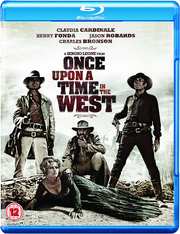






























































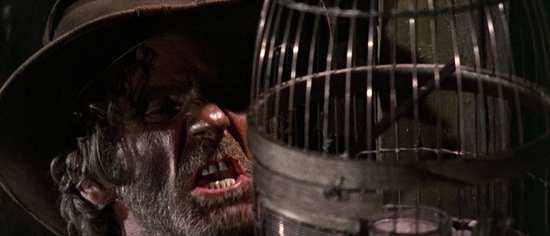


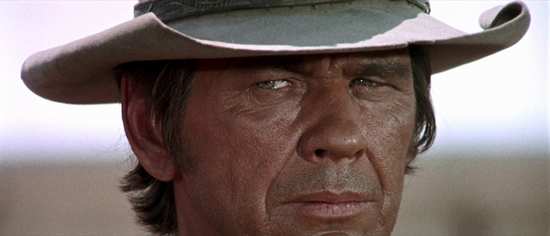
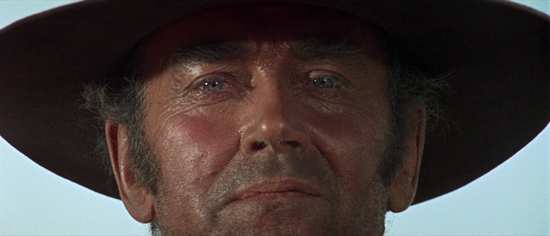
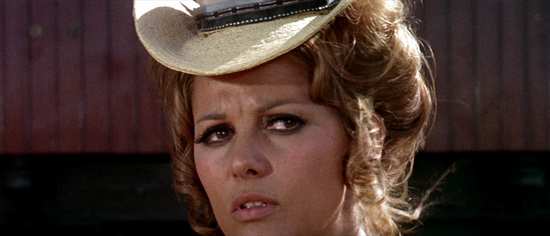
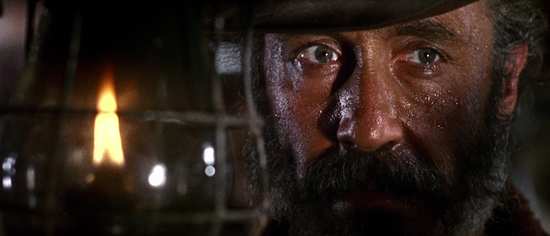

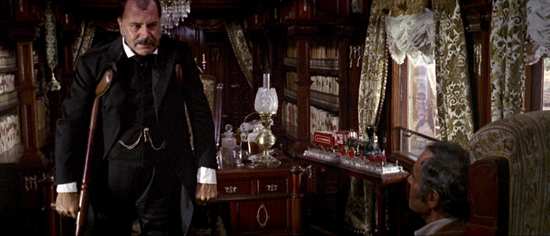
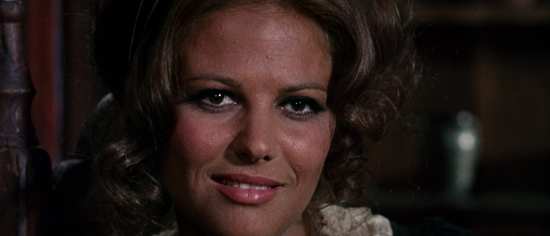
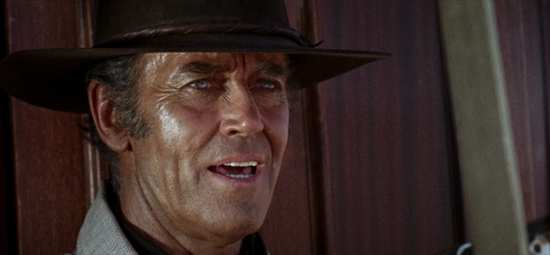
Your Opinions and Comments